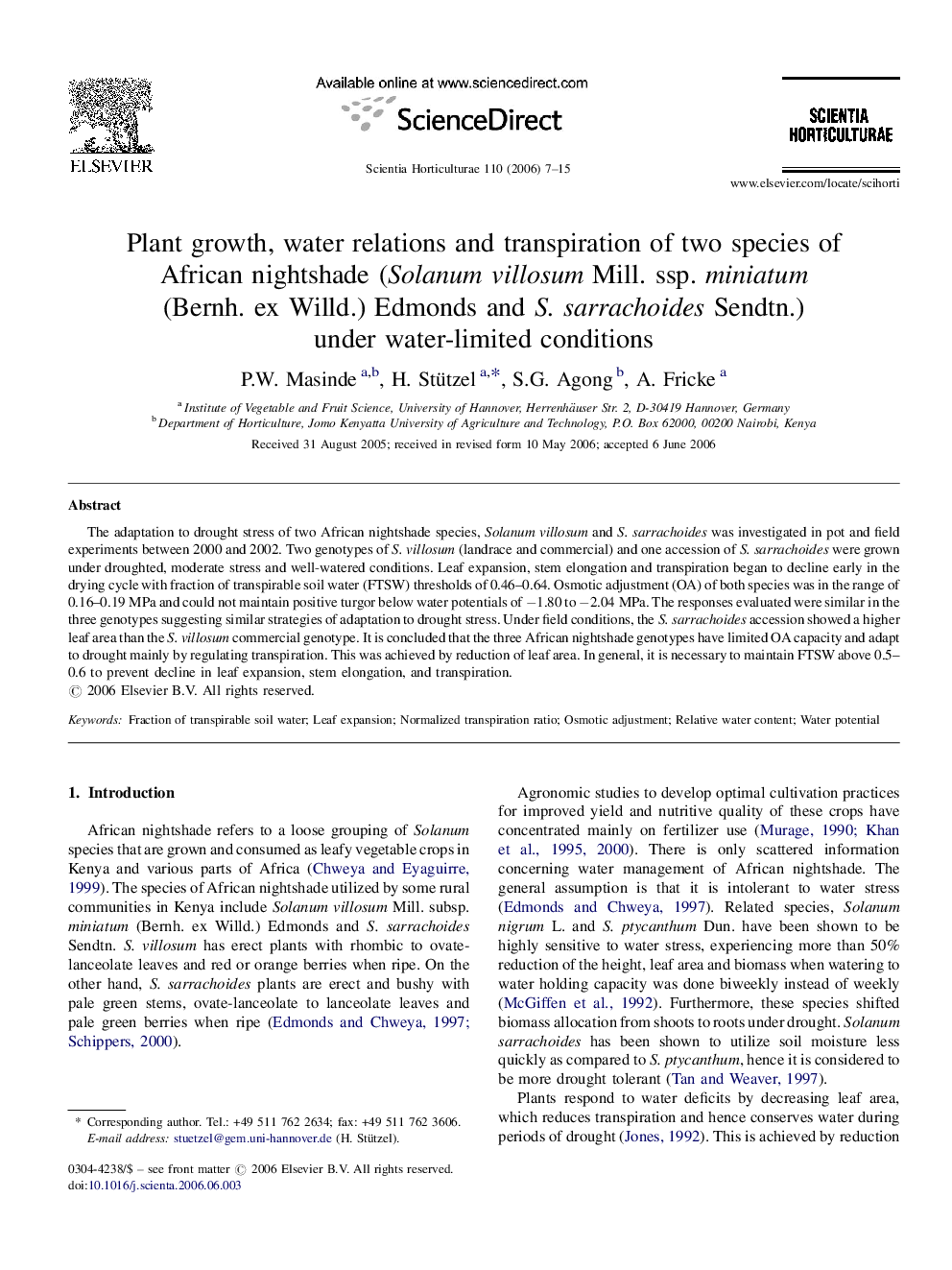| Article ID | Journal | Published Year | Pages | File Type |
|---|---|---|---|---|
| 4569974 | Scientia Horticulturae | 2006 | 9 Pages |
The adaptation to drought stress of two African nightshade species, Solanum villosum and S. sarrachoides was investigated in pot and field experiments between 2000 and 2002. Two genotypes of S. villosum (landrace and commercial) and one accession of S. sarrachoides were grown under droughted, moderate stress and well-watered conditions. Leaf expansion, stem elongation and transpiration began to decline early in the drying cycle with fraction of transpirable soil water (FTSW) thresholds of 0.46–0.64. Osmotic adjustment (OA) of both species was in the range of 0.16–0.19 MPa and could not maintain positive turgor below water potentials of −1.80 to −2.04 MPa. The responses evaluated were similar in the three genotypes suggesting similar strategies of adaptation to drought stress. Under field conditions, the S. sarrachoides accession showed a higher leaf area than the S. villosum commercial genotype. It is concluded that the three African nightshade genotypes have limited OA capacity and adapt to drought mainly by regulating transpiration. This was achieved by reduction of leaf area. In general, it is necessary to maintain FTSW above 0.5–0.6 to prevent decline in leaf expansion, stem elongation, and transpiration.
